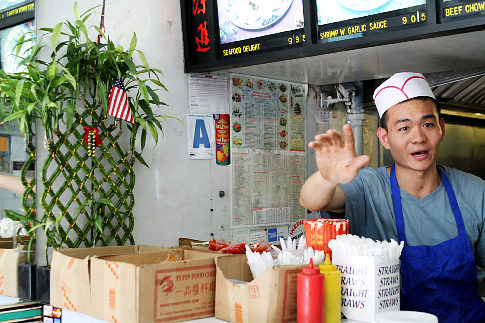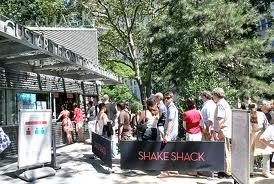The New York City health department unveiled a new Web site today to go along with the beginning of its A-B-C restaurant inspection disclosure system of more than 24,000 restaurants in the five (1).jpg) boroughs.
boroughs.
Daniel Kass, a deputy commissioner, told The New York Times,
“There is no shortage of sources of information on restaurants, but there is no other central source to find information about restaurants’ hygiene practices. We hope that this Web site will help spread the food safety message.”
The Web site displays restaurants’ current A, B or C letter grades and the specifics of their violations, and is designed to allow searches by restaurants’ first names or even first letters, by letter grades in specific ZIP codes, by boroughs and by dates of inspection. It also offers maps of restaurants’ locations, and Google street views of the restaurants’ exteriors.
John La Duca, the department’s director of online editing said a widget on the home page will permit readers to type in restaurants’ names for their latest inspection results. This widget can be installed on other Web sites or home pages — for example, on the Zagat Survey’s online version, or on bloggers’ sites, or Facebook and other social media platforms — to permit quick access to the inspection ratings from places other than the department’s home page.
Inspection results on the site were formerly updated weekly, Mr. Kass said. “Now, in most cases, it will be updated daily, when it is uploaded overnight from the inspectors’ hand-helds,” he said, referring to the portable computers in which inspectors enter restaurants’ cleanliness scores.
Associated Press commemorated the beginning of the new letter grades by recycling old arguments – the same ones heard when Los Angeles started it’s a-B-C system in 1998 and Toronto started its red-yellow-green system in 2002.
Robert Bookman, a lawyer for the New York State Restaurant Association, which vehemently opposes the letter grades, said,
"Some will undoubtedly close if they get a B or a C."
Others say they accept the new system and will strive for an A.
David Chang, whose hotter-than-hot restaurants include Momofuku Noodle Bar and Momofuku Ko, said,
"It is our goal always to get an A," said. "If we don’t get an A, we fail."
Chang said he has sent his sous chefs to city Health Department workshops to get up to speed on the new system.
That’s a much better approach. The best restaurants will not only embrace the letter grades and provide critiques to improve the system, they will brag and promote their A grades. It’s a form of marketing food safety, which helps enhance the overall culture of food safety.
Madelyn Alfano, who owns nine Maria’s Italian Kitchen restaurants, said Los Angeles restaurateurs still are not fond of the system, adding,
(1).jpg) "If you don’t have hand towels in your restroom that’s points off. We don’t like it but we’ve learned to live with it."
"If you don’t have hand towels in your restroom that’s points off. We don’t like it but we’ve learned to live with it."
That’s because paper towels should always be available. And what about a sticker on the dispenser that says,
“No towels? Please tell a server immediately. Yours in hand cleanliness, the owners.”
I just made that up.
Larry Michael, head of food protection for North Carolina’s Department of Environment and Natural Resources, said letter grade systems also are in effect in North and South Carolina, and the system works well, adding,
"Consumers really pay attention to the rating cards. The A, B, C system is familiar and it’s easy to interpret."
For those still wondering, here’s a review paper discussing the pros and cons of disclosure systems.
Filion, K. and Powell, D.A. 2009. The use of restaurant inspection disclosure systems as a means of communicating food safety information. Journal of Foodservice 20: 287-297.
Abstract?
The World Health Organization estimates that up to 30% of individuals in developed countries become ill from food or water each year. Up to 70% of these illnesses are estimated to be linked to food prepared at foodservice establishments. Consumer confidence in the safety of food prepared in restaurants is fragile, varying significantly from year to year, with many consumers attributing foodborne illness to foodservice. One of the key drivers of restaurant choice is consumer perception of the hygiene of a restaurant. Restaurant hygiene information is something consumers desire, and when available, may use to make dining decisions.
.jpg) carts) are not always out there," Farley said.
carts) are not always out there," Farley said. 
_story.jpg) the first six months under the new rules, 87 per cent had received either A or B grades, and 57 percent had received A’s.
the first six months under the new rules, 87 per cent had received either A or B grades, and 57 percent had received A’s.(1)(1).jpg) premise that receives a yellow conditional pass is re-inspected within 48 hours. Depending on the type of operation, each premise requires between one and three mandatory inspections a year.
premise that receives a yellow conditional pass is re-inspected within 48 hours. Depending on the type of operation, each premise requires between one and three mandatory inspections a year.  • Evidence of mice or live mice present in facility’s food and/or non-food areas.
• Evidence of mice or live mice present in facility’s food and/or non-food areas. commercial kitchen for some of its cakes (mice droppings were also found), and on Wednesday, it was closed again.
commercial kitchen for some of its cakes (mice droppings were also found), and on Wednesday, it was closed again. down. Every other time we’ve tried to access it in the past month, we’ve gotten a “taking too long to respond” page.
down. Every other time we’ve tried to access it in the past month, we’ve gotten a “taking too long to respond” page.  cheats.
cheats. A manager at Ming’s refused to say where he got his fake grade, saying that a company came in and then sent the letter to him. He refused to name that company – or to explain why he posted a grade he hadn’t earned. He also refused to give his name.
A manager at Ming’s refused to say where he got his fake grade, saying that a company came in and then sent the letter to him. He refused to name that company – or to explain why he posted a grade he hadn’t earned. He also refused to give his name..jpg) an A grade.
an A grade. mice kept emerging from the plants and approaching tables like beggars.
mice kept emerging from the plants and approaching tables like beggars.
.jpg) Halles’ kitchen, both critical violations. Poor plumbing and a lack of vermin-proofing were also listed on the Health Department’s Restaurant Inspection Information website.
Halles’ kitchen, both critical violations. Poor plumbing and a lack of vermin-proofing were also listed on the Health Department’s Restaurant Inspection Information website..story.jpg)
(1).jpg) boroughs.
boroughs.(1).jpg) "If you don’t have hand towels in your restroom that’s points off. We don’t like it but we’ve learned to live with it."
"If you don’t have hand towels in your restroom that’s points off. We don’t like it but we’ve learned to live with it."